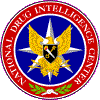
Rocky Mountain High Intensity Drug Trafficking Area Drug Market Analysis
June 2007
Transportation
Denver, Colorado Springs, and Salt Lake City are the major transshipment and distribution centers in the Rocky Mountain HIDTA region; they are located between major drug source areas in Mexico and Canada and are linked by interstate highways to major domestic drug markets across the United States. DTOs and criminal groups operating in the region transport large quantities of illicit drugs from Mexico and, to a lesser extent, Canada to these cities for distribution within the region. Additionally, traffickers who operate in the Midwest and the eastern United States often transport drugs that they obtain in California, Washington, and Oregon through the Rocky Mountain HIDTA region to their home markets. Interstate highways are commonly used by drug transporters; however, they are altering their methods and routes to use less scrutinized highways in an attempt to avoid heavily patrolled portions of interstates. For instance, the Wyoming Division of Criminal Investigation and Wyoming Highway Patrol in Cheyenne note that while most drug shipments typically traverse the Cheyenne jurisdiction on Interstate 80 eastbound, drug transportation along I-90 eastbound has increased significantly. Moreover, the Utah Highway Patrol reports an increase in the number and size of high-potency marijuana seizures on less traveled roadways (usually in multihundred-pound loads).
Mexican DTOs operate well-established transportation networks to ship methamphetamine, cocaine, heroin, and marijuana from Mexico and southwestern states to the HIDTA region, particularly Denver, Colorado Springs, and Salt Lake City. They generally transport illicit drugs from Juárez, Nayarit, and Sinaloa, Mexico; El Paso, Texas; and Nogales, Phoenix, and Yuma, Arizona, to Denver and Colorado Springs. However, recent investigations reveal that Mexican traffickers are increasingly transporting methamphetamine through San Diego, California, to the region. From Denver, where Interstates 25, 70, and 76 intersect, Mexican DTOs further transport illicit drugs to other markets in the region, such as Billings, Montana, and Cheyenne, Wyoming, and to major Midwest and eastern drug markets, including those in Chicago, Illinois; Kansas City, Missouri; Minneapolis, Minnesota; and New York City. They also use Salt Lake City as a distribution and transshipment center because of the city's accessibility to Arizona, California, and Mexico as well as to secondary drug markets in the HIDTA region and neighboring states. Most drug transportation by Mexican DTOs takes place using private and commercial vehicles.
Mexican DTOs are employing sophisticated techniques to transport illicit drugs, constantly adapting their methods of operation to avoid law enforcement detection and interdiction of their drug shipments. The North Metro Drug Task Force reports that Mexican DTOs are utilizing low-cost, disposable cell phones to facilitate the delivery of marijuana shipments to the area. For example, the driver of the marijuana shipment is provided with a cell phone and instructions to deliver the shipment to a particular location. When the driver arrives at the location, he calls a number that has been preprogrammed into the cell phone and states that he has arrived. He then leaves the vehicle, taking the cell phone with him. Thereafter, the vehicle is moved, and the marijuana is unloaded by other organization members at a different location. Once the marijuana has been unloaded, the car is returned to the original location, and the driver is notified on the same cell phone to return and take the load vehicle back to Mexico or another source location. Many drug task forces, particularly those in rural areas with limited law enforcement presence, report that Mexican traffickers also are adapting their delivery methods. Traffickers are now attempting to control the time and, more importantly, the location of the delivery by making last-minute changes to deter law enforcement surveillance and interdiction. Additionally, the Metro Gang Task Force reports that traffickers are transporting smaller drug shipments and looking for alternative routes to transport drugs from the Southwest Border area.
Mexican DTOs are also exploiting the northern tier of the Rocky Mountain HIDTA region, particularly Interstates 15, 25, and 90, to transport illicit drugs from Denver, Colorado Springs, and Salt Lake City to secondary markets in Montana, Wyoming, and neighboring states. These DTOs also transport methamphetamine, marijuana, cocaine, and small quantities of heroin to Montana from Yakima and the Tri-Cities (Kennewick, Pasco, and Richland) in Washington.
Asian DTOs, OMGs (such as HAMC and Bandidos), and Caucasian criminal groups based in British Columbia and Alberta, Canada, also use Interstates 15, 25, and 90 to transport high-potency marijuana and MDMA across the U.S.-Canada border through Washington and western Montana in private and commercial vehicles. Additionally, Asian DTOs often hire local independent drivers to transport high-potency marijuana and MDMA through the Sweetgrass POE in Montana to distribution centers in the Rocky Mountain HIDTA region and throughout the United States. After Asian DTOs, OMGs, and Caucasian criminal groups have delivered drug shipments in the United States, they sometimes accept powder cocaine as payment, subsequently smuggling the drug into Canada. As a result, kilogram quantities of cocaine are often seized by law enforcement officers at Coutts, Alberta, across the border from the Sweetgrass POE. Moreover, in 2006 an Alberta-based group of Caucasian males were arrested as they attempted to smuggle 30 kilograms of cocaine from Montana into Canada at the Del Bonita POE.